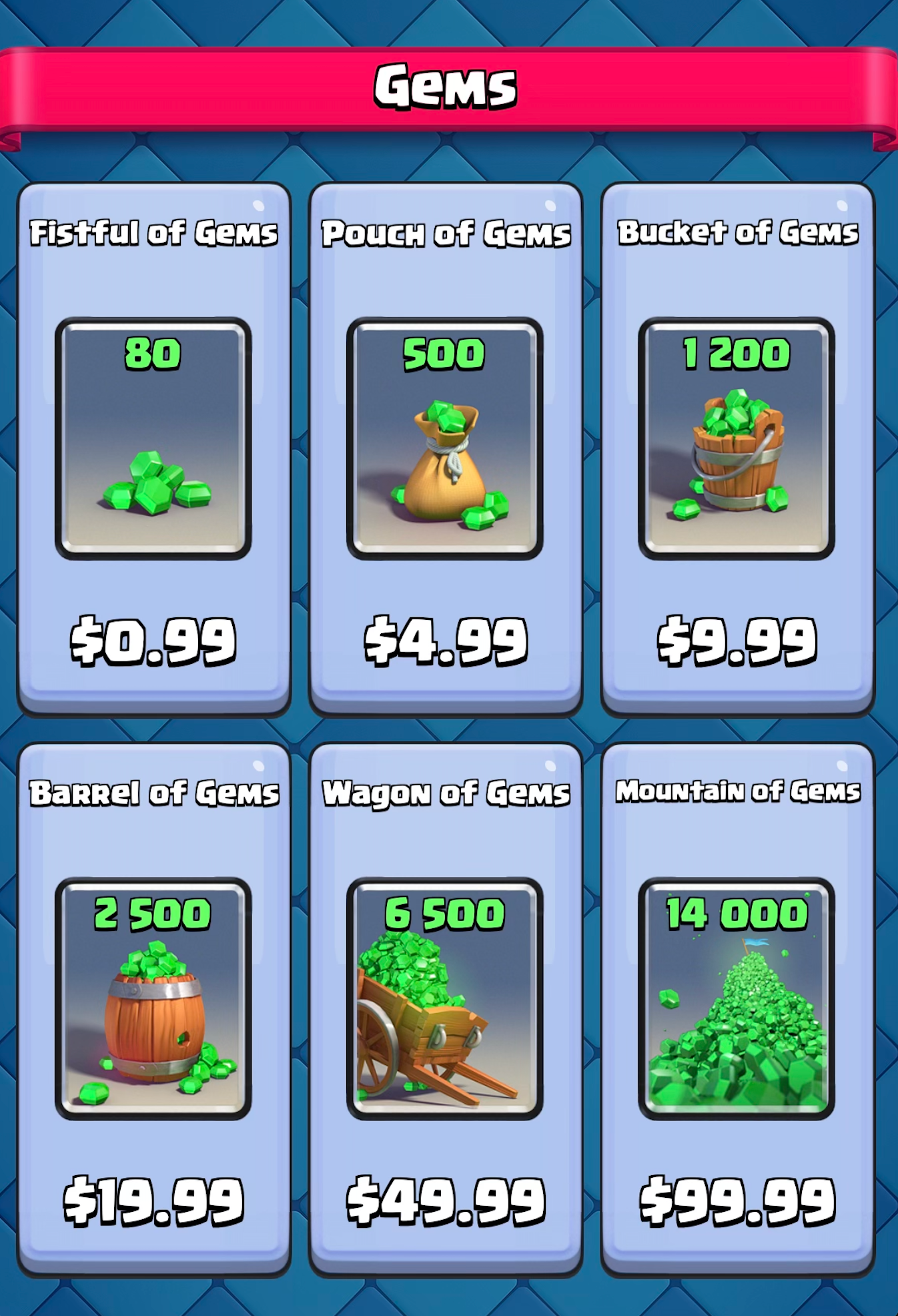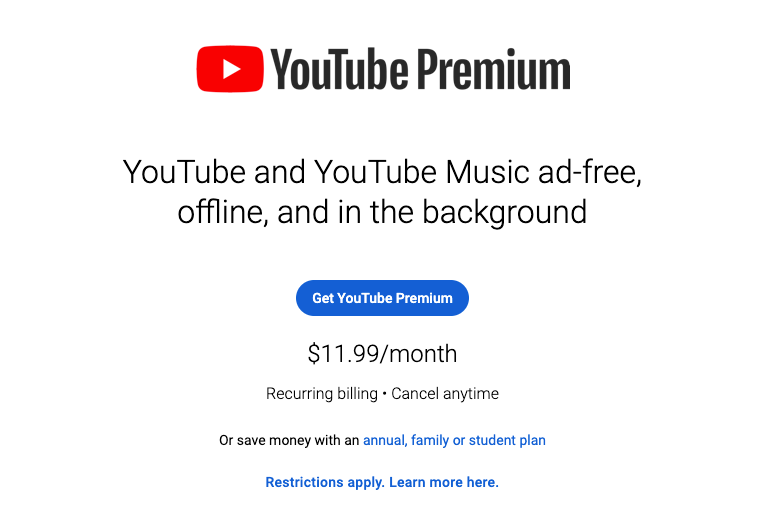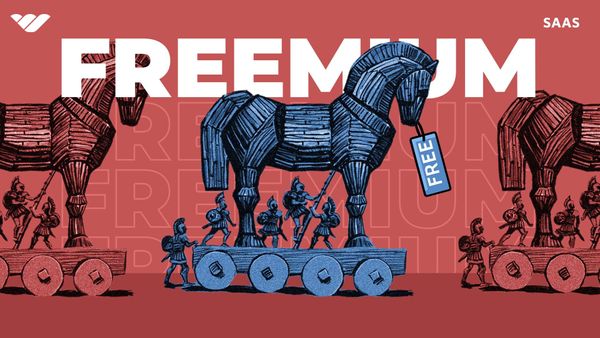With the expanding world of technology and people's need for specific programs, users are looking for inexpensive (or even free) options that will allow them to get the most basic needs out of a service.
This type of service has been dubbed “freemium” by some business experts. It is 'freemium' as it provides a free service, yet some of the more premium features are locked behind paywalls and subscriptions.
There have been some proven benefits to this practice, but that does not mean it is the perfect solution for every product or business.
If you are considering using a freemium business model approach for your business or service, you came to the right place! There are some things to consider and be aware of before you go down that path. We will be exploring some of those considerations, as well as pointing out the benefits and downsides of using this approach below. Let's dive in!
What Exactly Does “Freemium” Mean?
The term “freemium” comes from a combination of the words "free" and "premium." The freemium pricing model offers basic features of a product or service to users at no cost and charges a premium for supplemental or advanced features.
Companies using a freemium model provide basic services on a complimentary basis, often the scope of a "free trial" or limited version for the user, while also offering more advanced services or additional features at a premium.
There are some instances where the “freemium” aspect is actually paid for, but users would be paying for the most basic aspects of the service. Then, customers would need to pay additional costs for premium features. However, the term tends to be used for a free starting point of the service.
The freemium business model has become the dominant business model among internet start-ups and smartphone app developers. This could be due to the desire to entice users into the basic features of the service and encourage them they will have better opportunities if they upgrade to the paid, premium version of the service.
These services may be marketed as “basic” for the most introductory level and “deluxe,” “pro,” or “preferred” for the more premium experience.
Because free features tend to be a potent marketing tool, the freemium model allows new ventures to scale up and attract a large user base without expending resources on methods such as costly ad campaigns, sponsorships, or a traditional sales force.
The Freemium Business Model In Practice
Many different types of businesses and services utilize the freemium business model. Their premium options tend to include a pay-for-specific-benefit option, a subscription service, or a combination of the two. Let's take a look at some popular freemium business models.
Dating Apps/Services
Dating apps and services such as Tinder, Bumble, Hinge, Match, and more are prime examples of the freemium business model.
At the most basic level, users can match with and talk to other users but will have a limited number of swipes or likes per day.
By upgrading to premium subscriptions, users’ likes become unlimited, and they will get added benefits, such as filters to set their preferences of types of profiles they would like to see.
Games
The most popular form of freemium options is probably online games and gaming apps. If you have ever played a game on your device, you have probably received advertisements for upgrades to assist in your performance or advance you through the game.

Subscriptions to games may be enticing for players who are invested and may like early access to content, more log-in benefits, and more.
Video Conferencing
With the rise of the pandemic, video conferencing services took off with a dramatic increase in popularity and usage.
Services such as Zoom, Microsoft Teams, and Google Meet soared with more individuals and businesses buying into the premium options that would include longer meeting times, capabilities to record meeting conversations and store them, and extended capabilities within meetings, such as the ability to use a whiteboard feature or have multiple people share their screen.
Social Media Platforms
There are some specific social media platforms that have a premium option that will have differentiating benefits.
For example, the hiring and job posting platform LinkedIn allows members to see which users viewed their profile, access courses to improve professional skills, and a service to contact hiring managers for positions they may be interested in applying for.

On the other hand, services like YouTube offer additional services such as YouTube Red, which provides users with an ad-free experience and exclusive shows and movies, and YouTube TV, which allows users to watch TV from their YouTube account for a variety of network channels.
Video Streaming Services
Similar to YouTube, services like Netflix, Hulu, and Prime Video have users pay for a more immersive experience with their TV shows and movies.
However, the main difference between these and a service provider such as YouTube is that users already pay a premium fee to access the service. Additional features are locked behind additional paywalls that increase the user's subscription fees.
Is Freemium the Same as a Free Trial?
In its simplest terms, no, the freemium business model is not the same as a free trial before paying for a subscription. The main component of this is due to the time sensitivity a free trial offers as opposed to a free trial.
A 7-day free trial option can be discouraging for some as it does not offer a lot of time for users to experiment with the platform or service, which can discourage users from even attempting the free trial, as they may forget to cancel the subscription before the trial ends.
On the other hand, freemium options are not time sensitive, and users can choose exactly when and/or how they want to upgrade their experience. Users would see this as an experience that is more accessible and being given to people as a gift, as opposed to something that would lock them into an experience.
Implementing a Freemium Business Model
A freemium model can be a quick, efficient way to boost revenue with an average of 8%-10% conversion rate for SaaS, compared to a 1%-2% average for ecommerce.
Decide on the Free Options and the Differences Between the Free and Premium Subscription
Depending on the business or service you are intending to provide, you may look into different options for what options you would like to offer at the most basic level.
This could include extended time on the platform, additional resources such as templates or music, and/or access to experts or opportunities to grow within the platform.
These options should be encouraging enough to have users sign up to be a part of the service but not too broad as to dissuade them from signing up for the premium services. If they feel like they get the most out of the basic services you are offering for free, they will be less likely to sign up for a premium subscription.
Freemium SaaS Benefits
There are many benefits for those looking to indulge in the benefits of freemium SaaS. Pricing ranges for different tiers can bring some much-needed funding to the business while also allowing you to upgrade the service as it runs.
The six main Freemium SaaS benefits are as follows:
1) Effective customer acquisition
One major benefit freemium model is an effective way to acquire new customers. The accessibility for a free service is encouraging to anybody who may be interested in the service you are offering.

If competitors aren’t offering a free plan, it could further drive individuals to your business and will help you attract a larger user base to encourage toward becoming paying customers.
Then comes your next mission: building your perceived value to boost that freemium-to-paid conversion rate.
2) Aiding product-led business growth
There's no better way to prove the value of your offering than to give some of it away for free, letting prospective customers experience it firsthand and on their terms where they can make their own judgments of the value. That’s the intended purpose of product-led growth — letting your product speak for itself.
By involving active users that can be converted into paying users, PLG businesses can grow quickly and efficiently with a large impact.
3) Easier customer conversions
However you segment your pricing plan to include freemium, it is important to clearly signpost the features (and the benefits) that customers and their businesses are missing out on if they do not invest in paying for the full version.
This helps create great incentives for free users to upgrade and an easy conversion for you once you’ve identified the hot commodities that just keep coming back for more.
A freemium model also gives your business access to a continuous stream of user data and feedback to understand so it is easy to assess what is working and where to improve the product, positioning, or pricing strategy to keep and convert users.
4) Higher retention rates
A "try before you buy" solution allows new users to experiment with product functionalities and make a fully informed decision to upgrade or pay for the premium benefits.

This style of product-led growth will positively impact your SaaS churn rate, and therefore, both your customer and revenue retention rate will also increase.
5) Enhanced customer experience
Solid onboarding and UX throughout the site are needed to help consumers to feel comfortable with making informed decisions about investing in premium options, but freemium options can take the pressure out of the sale.
Not only does a freemium model allow prospective customers to weigh their options between the free benefits and the upgradable subscription, but it takes some pressure off the team to talk them into doing it, too.
6) More cost-effective
Customers using the freemium version probably do not expect the same level of service, support, or commitment from the team as those on a premium version of your product.
They can be independent to discover the product themselves, which cuts down on costs and time taken away from your developers or support team. However, that’s not to say there isn’t value in helping them fully understand how to use the product. Rather, freemium plans allow businesses to do so fairly cheaply and at scale through email flows, blog posts, and other onboarding communication tactics.
Assessing the Freemium Option
Recall that one of the chief purposes of freemium is to attract new users to your service. If this goal is not being met to the level of expectation, it could be because the free offerings of the service are not compelling enough, and you need to provide more or better features for free or rework the structure of the service.
The opposite side of the coin is generating lots of traffic but few people paying to upgrade to the premium services. Your free offerings may be too rich some features may need to be cut back.
The balancing act can be tricky as users can be comfortable with the free features and may revolt when asked to pay for things they are accustomed to getting free.
If consumers are not investing in the premium options or were a part of the service and then canceled their subscription or membership, do not be afraid to do an outreach assessment to see why. It could be because of a multitude of reasons, such as the price for the premium services being too high, finding a better option that meets their needs, or a combination of reasons even beyond those. In these cases it could also mean a different pricing strategy could be in order.
Freemium Options for Your Business
Freemium options are a useful tactic to help encourage customers to onboard into the extended premium offerings that you have integrated into your service. They are beneficial not just to you as a business but also to the consumer who will actively be involved in the service or product.
We at Whop can help you with promoting and marketing your product, including its freemium options, on our marketplace. Whop is a platform where consumers can browse, discover and buy digital goods and services. These digital 'products' can come in many forms – from 'Notion templates' to 'paid Discord communities', ChatGPT Plugins, and more!
👉Want to learn more about Whop and what we offer? Check out our consumer guide or marketplace today!



![The Best SaaS Subscription Management Software [2024]](/blog/content/images/size/w600/2023/11/SaaS-management.webp)

